The price tag cards in the mobile phone store have all the necessary information to help you choose the right model. But not every one of us knows what is behind Latin abbreviations and numbers. As a result, the purchase of a seemingly solid mobile phone often turns into disappointment: the necessary functions are not enough, or the charge is not kept. Let's see what parameters you need to pay attention to when choosing a phone, so that after a week you don’t have to carry it back to the store.

Content:
The best mobile phone manufacturers - which company to choose
About 15 years ago, mobile phone manufacturers could be counted on the fingers. Now their ranks are replenished annually with dozens of new names, but the “old men” still do not lose their positions. Their gadgets are pleased with the abundance of features, stylish and recognizable design, and most importantly - reliability.
In the “best of the best” list, the top lines are:
- Nokia;
- Samsung;
- LG;
- Philips.
- See also: The best manufacturers of smartphones
Any phone of these manufacturers is good in its own way, and some of them are close to the ideal at all - we considered such models in our recent rating. But since for most people a mobile phone is not just a status thing, but a working device, one big name on the case is not enough to buy it.
Let's deal with the parameters that really need to pay attention to when choosing.
The principle of operation and device mobile phone

Looks like a cell phone outside, even schoolchildren know. This is a case with a display, push-button keyboard (no touchscreen smartphones), external camera and a number of combined connectors for charging and connecting the headset. Under the back cover is hidden battery, as well as slots for SIM and memory cards.
But the internal structure of the mobile phone is not widely known, although the most important elements are located here:
1. Speaker and microphone;
2. Quartz real time clock;
3. The microprocessor - it controls the entire operation of the device.
4. Transceiver with its own signal processor, connected to the antenna and its own power amplifier.
5. The power controller is a set of chips, each of which regulates the supply of current from the battery to a particular node of the phone. He also monitors the progress of the charging device.
And this is not a complete list of important mobile phone nodes. Electronic filling includes a number of controllers responsible for the backlight, call signal, SIM card data processing, as well as packets received via infrared or Bluetooth.
Simplified operation of a mobile phone is as follows:
1. You speak into the microphone, and it sends a signal to the transceiver, where your “analog” speech is digitized and transmitted to the antenna.
2. Information is transmitted to the nearest base station (BS) of your operator, then to the next one - and so on along the chain, until it reaches your interlocutor's BS.
3. A digital packet through the antenna of his phone comes to the same transceiver, only here it is already decoding.
4. The decoded signal is output to the speaker, and the user hears your voice.
Types of mobile phones
With numeric keypad
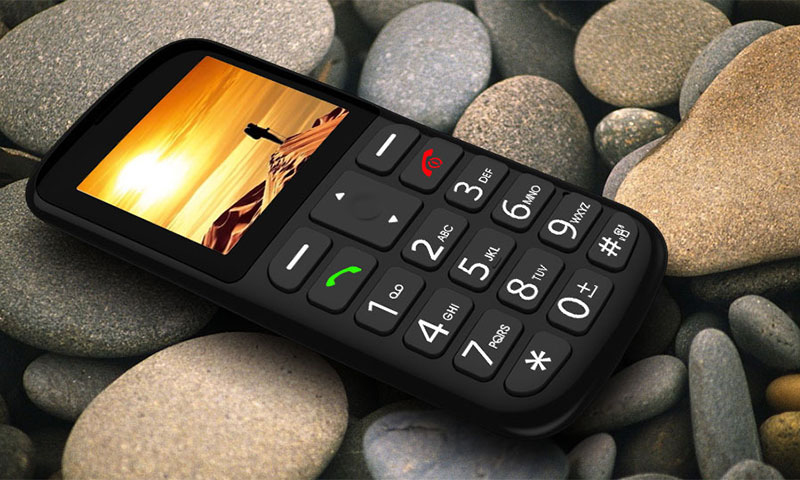
SELECTION OF THE BEST PUBLIC TELEPHONES
Massive monoblocks are the first mobile phones, and they still have a rather big army of admirers - from those who do not want to switch to sensory models.
In such devices, as a rule, a poor set of necessary functions, so they are often used only for calls and sending SMS.More advanced devices also allow you to go online and take pictures with the built-in camera.
Software for classic gadgets is modest, and they usually do not have a full-fledged operating system, which is why they are sometimes called obsolete. However, the demand for them is, and rather big.
Pros:
- Simplicity and reliability of the design;
- Not overloaded and clear menu;
- Due to the lack of unnecessary features work fine and do not hang;
- A wide range of models, diverse designs;
- Reasonable prices.
Minuses:
- In terms of their functionality, they are far from modern smartphones;
- Quite overall, although today it is no longer considered a disadvantage.
- We recommend: The best compact smartphones
Smartphones with a QWERTY keyboard
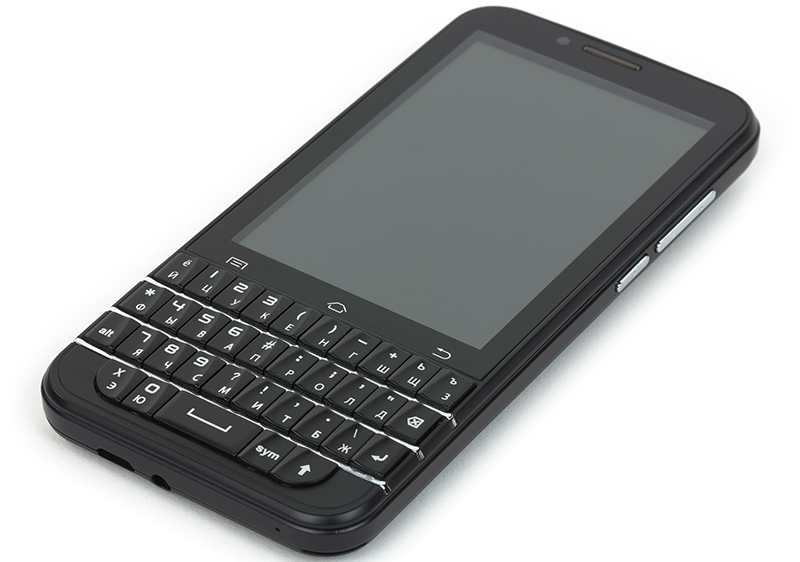
These phones are also called communicators. From their older counterparts, they differ in a full-fledged keyboard, similar to a computer keyboard. It can take up digital space, fold out or slide out to the side.
In fact, these are smartphones, only push-buttons. But sensory models will soon be finally driving them out of the market, since they are much more convenient for lovers of mobile correspondence.
- You'll like it: What is the difference between a smartphone and a communicator?
Pros:
- It looks like a standard phone, but with a full keyboard for typing;
- Extended feature set;
- Always original design.
Minuses:
- Too small buttons on the keyboard;
- Touch phones handle their tasks much better.
"Cots"

These models are distinguished by a stylish design and compact dimensions when folded. Here, on the top hinged cover, there is a screen (one or two) and a speaker, and on the bottom - a keyboard and microphone.
With this design, it is much easier to receive incoming calls and talk on the phone. Unfortunately, the once fashionable form factor today is rarely found on store shelves.
Pros:
- Always look stylish and elegant;
- Easy handling;
- Have relatively compact dimensions when folded;
- Reliable screen and keyboard protection;
- Very large buttons.
Minuses:
- The top cover may loose over time;
- The cable connecting the screen and the keyboard is gradually frayed.
Sliders
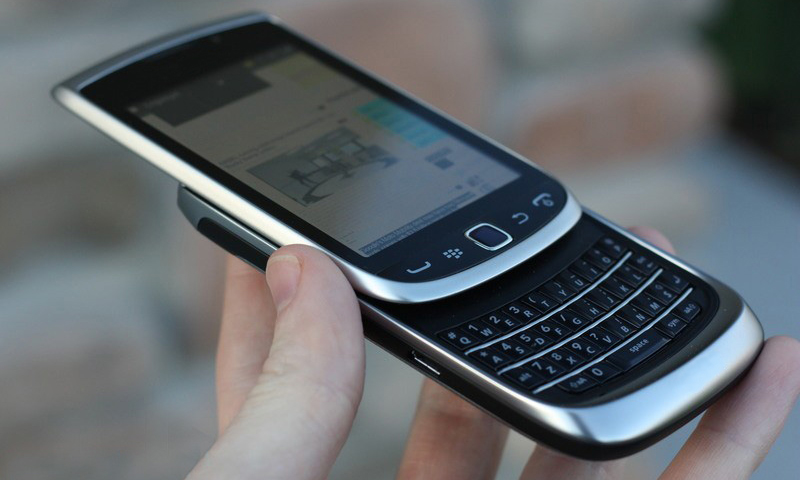
Another compact option that allows you to install on a mobile phone a fairly large screen, and already hide the keyboard under it. The upper block, if necessary, moves up or to the side, but thanks to the function buttons placed on it, it is possible to accept / reject a call.
In addition, manufacturers today offer similar models with touch screens, which makes them even more functional. The display moves along the sled - and this is a much more reliable design than the hinge hinges.
Pros:
- Stylish design and compact size;
- Big screen;
- Good functionality - as for push-button models;
- Reliable design;
- To answer a call, you do not need to fold the phone every time;
- On sale are models with a wide QWERTY-keyboard.
Minuses:
- The sled is sometimes clogged with debris;
- The screen will always be at risk.
Sensory
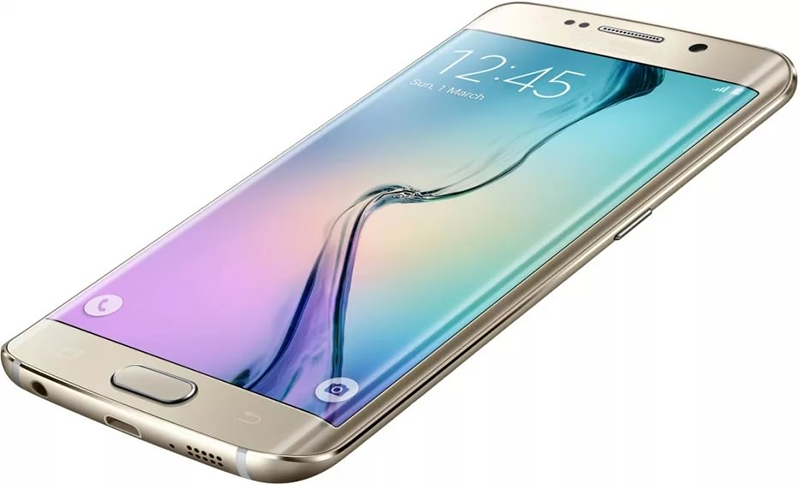
RATING OF THE BEST SMARTPHONES
This family is so numerous that it has long been formed into a separate class. We are talking about full-fledged smartphones (smart phones) that can not only make calls and send messages. Modern sensory models are already quite pulling the title of handheld computers, because they can do everything the same as PCs - even video games do.
High functionality smartphones provide powerful processors and specially designed operating systems for them. A sensitive touchscreen makes it easy to control the phone without any buttons, although many models are equipped with function keys (from 1 to 3), which simplify working with these smart devices.
Pros:
- Maximum functionality;
- Big screen;
- OS availability;
- Fast access to the Internet;
- Often equipped with high-quality cameras.
Minuses:
- High price;
- Require screen protection;
- Quickly put the battery.
- We recommend: A selection of the best covers to protect smartphones
Mobile phone selection options
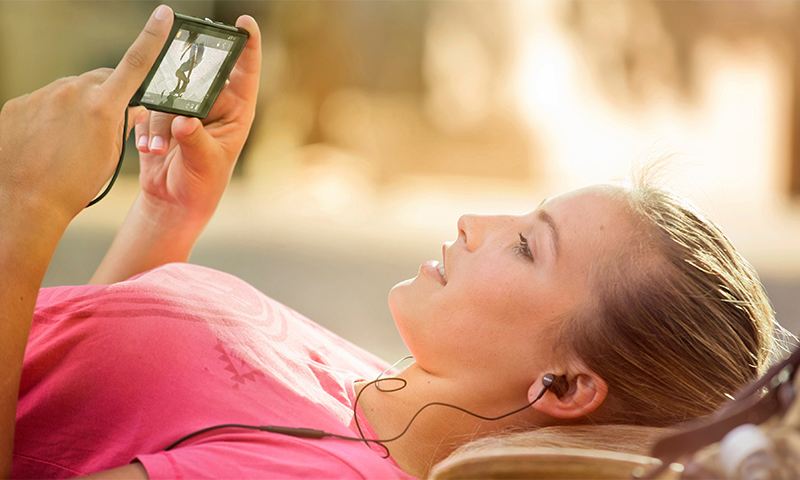
SIM slots
A large number of existing mobile operators forces us to carefully select tariffs in order to spend as little as possible on communication. However, it is most advantageous to combine them, for example, to use the Internet of one operator, and to make calls on the network of another.
To avoid having to buy two separate phones for the sake of it, it makes sense to purchase a Dual-model with two SIM slots. There are mobile phones that support 3 SIM cards, but there are few of them, since rarely anyone gets such a number of personal numbers.
If you really need a device on two SIM, pay attention to the type of slots. Often one of them turns out to be a hybrid, that is, you can install either a SIM card or a flash card into it.
Manufacturers do this in order to expand the consumer audience for a particular model. But are you ready to make such a compromise - decide for yourself. If the phone's native memory is enough for your tasks, the hybrid version is really worth considering.
Also, before buying, you need to clarify exactly how the Dual-Phone works with the installed cards.
Here everything will depend on the implemented support technology:
1. Standby - implies the permanent operation of only one card, the second one is disabled at this time. To make a call from it, you will have to select the desired mode in the corresponding section of the menu, and in some older models - and completely reboot the device.
2. Dual Standby - here both sims are constantly on, but still use a common transceiver. Because of this, when talking on one of the numbers, the second becomes temporarily unavailable. And this is perhaps the only inconvenience - you can easily miss an important call on another line.
3. Active is the most expensive technology that requires installation of two radio modules in the phone at once. Accordingly, both cards will always be active, but the battery consumption will increase significantly. Full support for two SIM cards is ideal if you want to use the phone at the same time for both communication and surfing the Internet.
Display type and specifications
The type and resolution of the screen equally determine the comfort of using the phone and its cost.
1. In budget devices there are passive STNs and matrixes derived from them - not very bright, practically “invisible” in sunny weather and having a long response time. True, manufacturers continue to improve this technology, gradually getting rid of these shortcomings.
2. Phones of the average price category are equipped with active TFT and MVA displays. Here, the picture quality is better, visibility decreases in the sun, but it is not critical, and the response time can be called optimal. The only disadvantage of these screens is small viewing angles.
3. The most expensive phone models are equipped with OLED and IPS-matrices. They are characterized by good brightness with minimal power consumption and give a super-clear picture with very wide viewing angles.
If you decide to buy a touchscreen phone, you will have to choose one of two types of touchscreen:
1. The resistor is relatively inexpensive and responds to touching various objects (and not just with a finger). Alas, such screens are short-lived, because they are afraid of scratches and eventually literally fade.
2. Capacitive sensors are much brighter and more reliable, but to work with them in winter you have to take off gloves.
Many when choosing a mobile phone pay attention to the diagonal of the screen. Of course, it matters, but this characteristic should be considered only in conjunction with the display resolution. Otherwise, a big picture may turn into a set of unintelligible squares.
We give the optimal ratio of the number of pixels and the diagonal of the screen, which should be guided when buying:
1. From 128x160 to 320x480 - the lowest resolution, which is suitable only for "grandma phones" and simple dialers with very small screens 1.77-3 ″.
2. 480x800 (854) - these figures can often be seen in the characteristics of inexpensive mobile phones. The picture quality will be decent if the display has a diagonal of about 3.5-4 ″.
3. 540x960 is a great option, especially if the screen size does not exceed 4.8 inches.
4. 720x1280 - the same HD-quality, which is quite suitable for phablets, but is best perceived from screens with a diagonal of about 5.5 ″. On such devices, you can already safely watch movies and surf the Internet.
5. 1080x1920 - the highest quality Full-HD images and a sign of an expensive flagship model.
Battery
The quality of the battery and its capacity depends on the autonomy of your phone. We will not dwell on the types of batteries in detail - today practically all devices use lithium-polymer and lithium-ion batteries, which do not have fundamental differences.
- You'll like it: The best smartphones with good battery
As for capacity, here you will have to look not only at the figure indicated on the “bank”, but also at the needs of the vending machine.
The increase in energy consumption give:
1. Additional radio module for the second Active SIM;
2. A huge screen with LED-backlit;
3. The work of Bluetooth channels;
4. Wi-Fi.
The more sophisticated your phone is and the more often you use its rich functionality, the higher should be the battery capacity.
1. On average, a standard phone, on which you will only talk and read e-books, will have a battery for 2000-2500 mAh. You can bring this figure to 3000, if the mobile phone uses the energy-intensive modes listed above.
2. For the simplest dialers, a 1000 mAh battery is more than enough.
3. Those who are looking for a smartphone for active use in gaming, multimedia and surfing mode, need a battery with a capacity of at least 3500-4000 mAh.
Camera
Ordinary push-button telephones are very rarely equipped with normal cameras. The resolution of 2-3.2 Mp - the ceiling, even for devices of the average price category. Frankly, it would be better if manufacturers did not put anything here - it would be cheaper.
If you're really going to use your phone for photo and video, look for models with a camera resolution of at least 5 megapixels. Moreover, those who like taking selfies should pay attention to the characteristics of not only the main, but also the front optics.
Processor (for smartphone)
From the installed processor will depend on the speed and stability of the "handheld computer".
You only need to know its two main characteristics:
1. Frequency;
2. Number of Cores.
CPU clock speed indirectly indicates the performance of the smartphone:
1. If it does not exceed 1 GHz - in front of you is a budget or simply outdated model, not designed for any serious workload.
2. 1.3-1.7 GHz - ensures stable operation of the average smartphone.
3. Over 1.9-2.0 GHz - such processors are put on the most expensive models, stuffed with energy-intensive applications and programs.
As for the number of cores, here the rule “the more, the better” is not valid. Even if a manufacturer has crammed 8 computing blocks into your device, they will not work at the same time.
So limit yourself to two cores for standard tasks, and leave 4-core models for video game lovers on the phone.
- You will be interested in: The best smartphones for games
RAM size
We will not touch the permanent memory - its volume can be easily increased by installing the appropriate flash drive. But with the RAM, this number will not work, so it is better to immediately choose a model with the maximum rate.
1. For push-button dialers, the volume of the OP is not critical - they do not solve complex problems.
2. When buying a smartphone, it is important that it has a reserve of at least 1 GB. Otherwise, the device will slow down.
Which mobile phone to choose

1. If you are a man of manual labor or an extreme sportsman, you will need a reliable and durable push-button telephone.Choose a monoblock for 2 SIM cards with good protection and not too overloaded with various functions. TFT-screen with a diagonal of 3 to 5 ″ will be enough. If you plan to use the camera, pay attention to its resolution - it should fit into the framework of 2-5 Mp.
2. Older parents are better off to purchase a candy bar with large keys and the simplest screen based on a passive STN matrix. The extra functionality here is not only unnecessary, but also harmful.
- We recommend: Ranking of the best smartphones for the elderly
3. The student can purchase a touch slider or a communicator with a QWERTY-keyboard. The number of slots for SIM - at your discretion, the display is better to choose a TFT or MVA with a diagonal of 4-5 ″. The presence of a camera is necessary, although it is not worth chasing a particularly steep one: a 2-3.2 megapixel will completely satisfy the child and not increase the cost of the mobile phone too much.
4. Working women of elegant age can opt for sliders or flip phones, if there is no desire to switch to sensory devices. Buy models with average display characteristics and battery capacity in the range of 1000-2000 mAh. The presence of a 3.2 megapixel camera is welcome.
5. Active people who need constant access to the Internet, e-mail and many other functions, will suit smartphones with a screen diagonal of 4.6-5 ″. 540x960 resolution will be enough, but if you want to watch movies in good quality, you can fork out for HD-format. Ideally, the phablet should be equipped with an IPS or OLED matrix, have at least 1 gig of RAM and a processor with a frequency of at least 1.5 GHz.
6. Avid travelers and lovers of parties will also be suitable smartphones - but certainly with high-quality cameras (rear and front), with a resolution of at least 5-8 megapixels. The main thing is that with such loads the battery could hold out at least until the evening. Take the one with a larger capacity - in the range of 4000-5000 mA · h.
- Note: Best Secure Phones
How much is a mobile phone

1. A simple candy bar can be purchased at prices ranging from 500 rubles to 7-9 thousand.
2. Folding beds are 800-4000 rubles each.
3. Sliders start from 1000 and reach 50 thousand rubles.
4. Smartphones with a QWERTY-keyboard pull in the amount of 7-7.5 to 15-17 thousand.
5. Touch phones have the highest price run - from 800-1000 rubles for the simplest "Chinese" to 300-350 thousand for the image model.
It will be interesting to friends too

